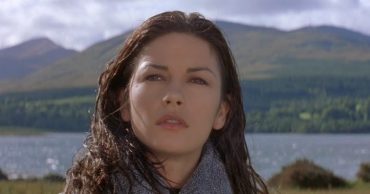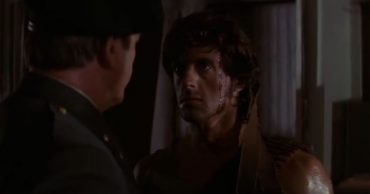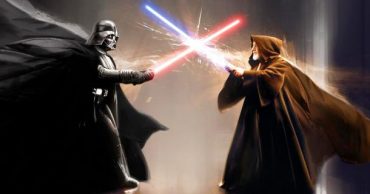
Cinemas and trains go together like no other form of transport. Equal parts romantic and thrilling, they offer a sense of unequalled escapism. Whether its the tearful goodbyes of Casablanca, the secretive affair of Brief Encounter, the epic crash of The Fugitive, the chase scenes of The General, the fateful encounter in Before Sunrise, or even the conclusion to Paddington 2, the comings and goings of trains have been used to give both extra metaphorical and literal dynamism to countless film narratives.
In fact, trains have always been at the forefront of cinema. After all, the foundational image of the art form – The Lumiere Brother’s The Arrival of a Train at La Ciotat Station – simply shoots a train as it docks into a station, setting the stage for a fruitful partnership that helps define the very fabric of cinema itself.
Trains are even so popular that entire stories have been set on them. This is due to the way they are able to keep action moving forward (as the train moves from a to b) as its characters are forced to occupy the same physical space. From action thrillers to class commentaries to classic whodunnits, here are our favorite films set on a train. Don’t agree with what we picked? Sound off in the comments below.
The Lady Vanishes
Perhaps the best of all Alfred Hitchcock’s British films, The Lady Vanishes tells the story of a young lady travelling through continental Europe who suddenly realizes that her elderly travelling companion has disappeared. Containing endless twists as well as a pre-WW2 espionage subplot, The Lady Vanishes is a delightfully entertaining concoction that doubles up as a study of British mannerisms and the classic 1930s era of train travel.
Featuring breakout performances from stars Michael Redgrave and Margaret Lockwood, it become the most successful British film to date upon its release, and put Alfred Hitchcock on the Hollywood radar, thus setting the stage for his big move to L.A. It also introduced the world to the quintessentially British Charters and Caldicott, who care far more about making it to their cricket game than any mystery, and would later turn up in Carol Reed’s The Night Train to Munich.
The Commuter
Billed as a simple actioner, there are surprising depths to Jaume Collet-Serra’s train-based thriller The Commuter. Starring Liam Neeson as a former cop turned insurance agent who has just been laid off from his job, the vast majority of the action takes place on his commute back from Manhattan to Tarrytown.
What’s impressive about the film (and yes I timed it) is that its mystery storyline, concerning Neeson’s character unwittingly being recruited to becoming a murderer, unfolds in almost the amount of time it would actually take for this journey to be completed in real life. The premise of the commute allows director Collet-Serra to actually investigate the difficulty of modern American life, and the sacrifices people take to put money on the table.
Therefore, while the thrills are thrilling and the action sequences accomplished, The Commuter has a thematic, socioeconomic depth that puts it alongside The Grey as one of Liam Neeson’s most profound action films.
Murder on the Orient Express (1974)
This classic Agatha Christie production has been adapted for television and film five times, but our favorite is the 1974 production with Albert Finney playing the role of Hercule Poirot. For those unacquainted with the classic film, it takes place on one of the most famous luxury train lines of all, the now discontinued route from Istanbul to Paris, with the majority of the action happening in former Yugoslavia.
When one of the guests on the train is found murdered, every passenger in the coach – apart from Poirot himself – becomes a suspect, spurring a game of cat-and-mouse that leads to one of the most delightful of all mystery reveals. It boasts an all-star supporting cast that mixes Old Hollywood with new upstarts, including Lauran Bacall, Ingrid Bergman, Sean Connery, John Gielgud, Vanessa Redgrave, Anthony Perkins and more, making for one of the most entertaining ensembles of all time. Train enthusiasts can also enjoy vicariously taking a route that would now require a switch in either Belgrade or Bucharest then Munich.
Under Siege 2
Released back when Steven Seagal was a bonafide action star and had the chops to get his passion projects made, Under Siege 2 moved the subterranean action of the first film to the Grand Continental, travelling from Denver to Los Angeles. Recalling classic train hijackings of old Westerns, hero Casey Ryback is forced to defend his niece and the other passengers aboard when the train is taken over by cyber-terrorist Travis Dane, played with balls-to-the-walls relish by Eric Bogosian.
The result is a far more fun and enjoyable movie than the first one, with Seagal putting his no-bullshit demeanor to great use. With awesome stunts that often defy the very laws of physics and a crazy villain scheme that encapsulates the action movie madness of the 90s, and Under Siege 2 is the perfect don’t-think-about-it-too-hard entertainment.
Snowpiercer
The most expensive Korean production to date, Snowpiercer uses the conceit of a passenger train as an allegory for the human race. Based on the graphic novel Le Transperceneige by French comic book artist Jacques Lob, Snowpiercer imagines the last people left on earth surviving on a train that spans an earth covered in snow.
Chris Evans plays Curtis Everett, a man stuck in cattle class at the back, living in squalid conditions while the rich live in luxury cabins further down the train. Instigating a revolution against the guards, his journey through the train acts as a microcosm of society, in which vast wealth is stored up by the rich at the detriment of the poor. While not quite as effective as Bong Joon-ho’s Best Picture winning Parasite, it does offer a similar amount of genre-bending thrills and seething class criticism.
 Follow Us
Follow Us




